INTRODUCTION
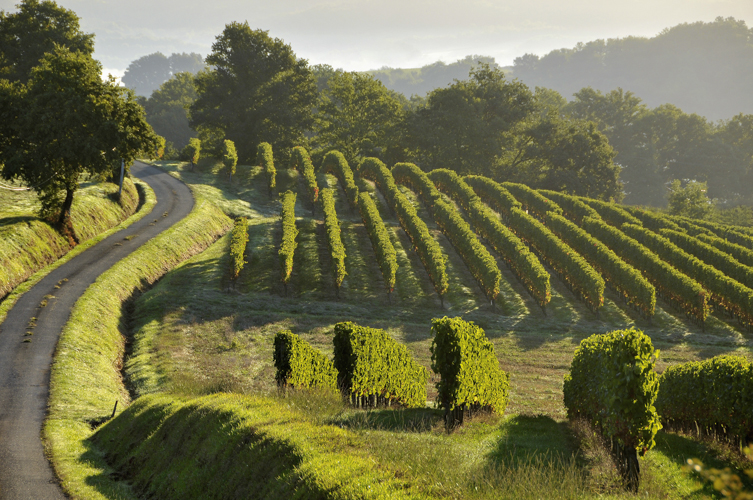
Armagnac is a genuine product of rural France, affectionately known as La France Profonde; the bucolic rolling hills of Gascony, Bordeaux and Toulouse. Despite a history stretching back some 700 years as one of the world’s oldest distilled spirits, Armagnac remains a mysterious secret to many, with barely 300 producers, ranging from aristocratic owners of historic châteaux to cheerful red-faced farmers who stash away their precious barrels like a marriage dowry, while concentrating on the daily business of raising ducks and cattle, tending vines and fruit trees, cultivating cereals. A biodiversity that makes this region unique. The big global brands dominating the world’s spirits markets are delightfully absent in Armagnac, meaning that instead of a conformist, reliable style of eau-de-vie, Armagnac is delightfully individualist, idiosyncratic.
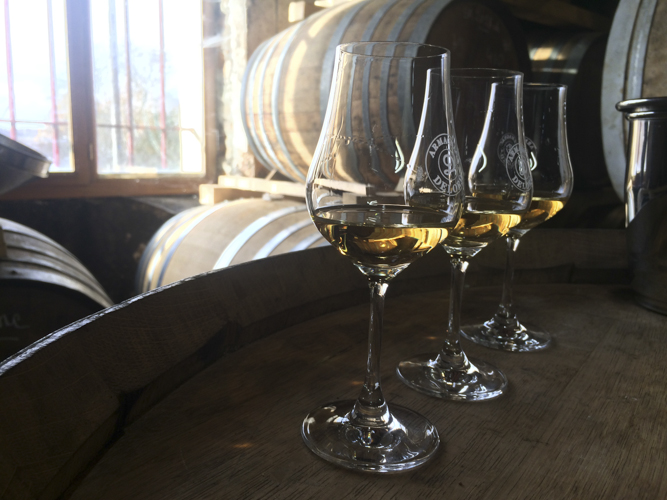
Each bottle varies not just from region or producer, but from one barrel to another, depending on the choice of grapes and quality of the wine, its distilling, wood ageing, and finally the crucial role of the cellar master in the blending.
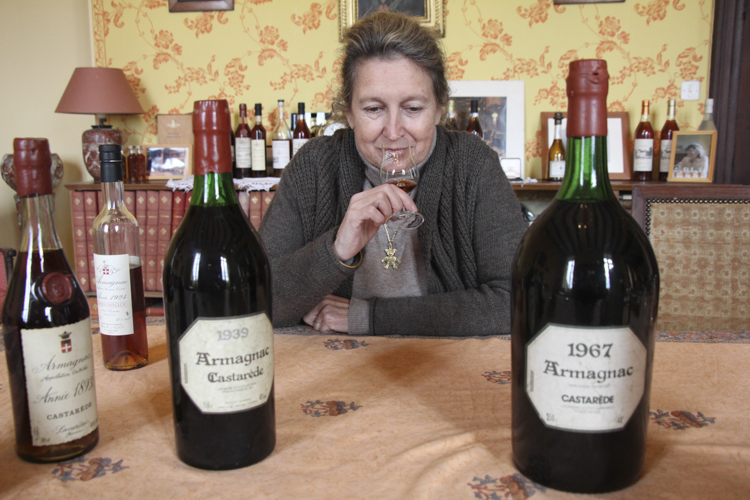
But to really understand Armagnac you need to come visit the region, and meet the people making this unique spirit. The welcome awaiting visitors for a tasting is exceptional, whether it is in a sumptuous castle or rustic farmhouse. To understand all the detailed background of elusive, complex Armagnac, have a read first of the informative official website, then make an itinerary to visit some of the following ten recommendations.
TOP TEN ARMAGNAC PRODUCERS TO DISCOVER
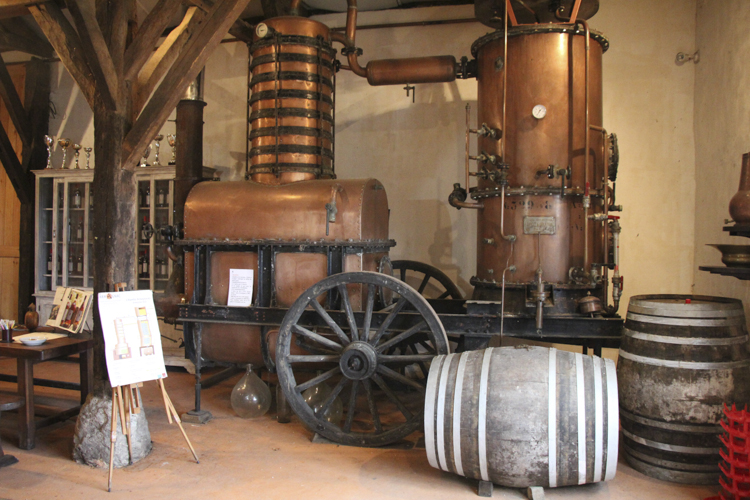
This romantic manor house, encircled by neat lines of graphic vines, is owned by one of Gascony’s most historic families, descendants no less of the famed Comte D’Artagnan. The present-day Countess, Claire de Montesquieu, is the hands-on producer, from sticking on labels to tasting and blending. The rustic wood-beamed tasting room is dominated by an ancient copper alambic, and while swirling and gently sniffing a glass of one of her rare vintages, she explains that, “our armagnac comes solely from the wine we make from the family’s vineyard. The higher the quality of the wine to distill, the better the armagnac, and that is our secret for making what I call an haute-couture armagnac.” And she insists that, “I am very strict with my principles of not adding anything to my armagnac – no caramel for the colour, no water to dilute the alcohol. No compromises.”
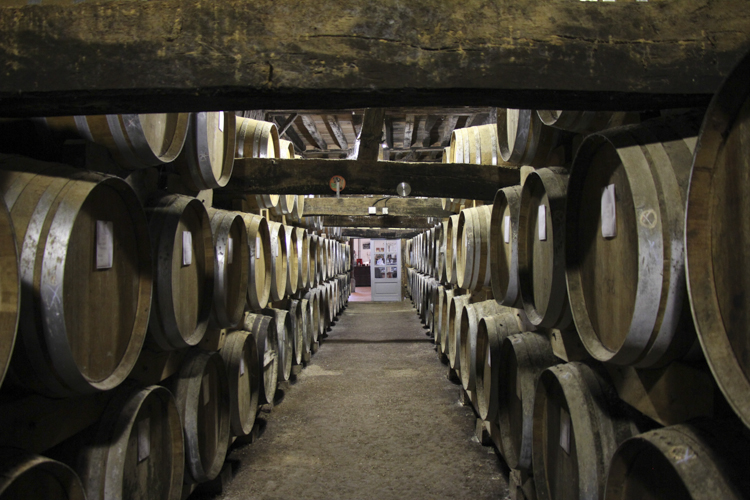
Her ageing cellar is spectacular, piled high to the rafters with 400 litre barrels, and Claire proudly relates how, “each of my Gascon oak barrels tells its own story, and that is why many of my clients prefer to buy a whole one, even making a pilgrimage to bottle their own armagnac.”
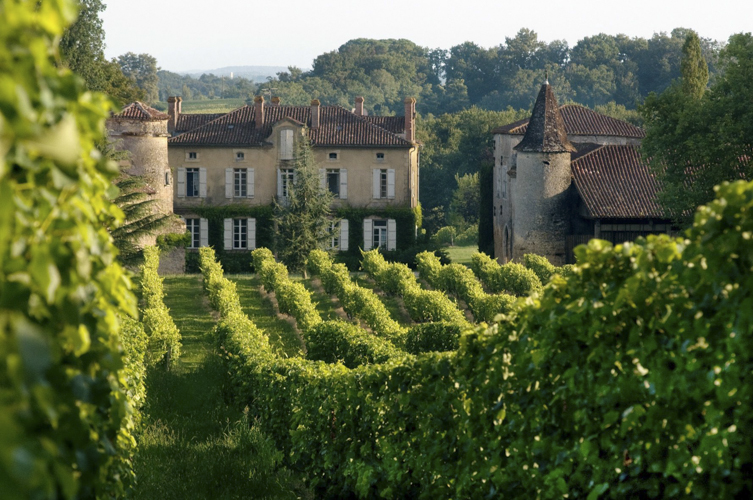
The Castarède entrance is clearly marked by a towering lone parasol pine, with a route running through vineyards, eventually coming out at a grand château. The châtelaine is another dynamic lady, Florence Castarède, 6th generation of one of the oldest Armagnac houses, operating since 1832. “My grandfather bought the château 40 years ago, a 17th century domaine that once had over 2,000 hectares of vines. Today there are still 16 hectares dedicated solely to the grapes we use to distill our armagnac; Colombard, Folle Blanche, Ugni-blanc, Baco and Plant de Graisse.”
For Florence, the magic of armagnac begins with the ageing process, passionately describing how “first we decide on the level of toasting of the wood, then aerating the eau-de-vie, changing barrels from new oak to older casks, when or if to add water – ‘les petites eaux’ – a mixture of distilled water and armagnac, sometimes necessary to reduce the level of alcohol, and finally, the moment to stop the ageing and transfer the armagnac to a glass demijohn.”
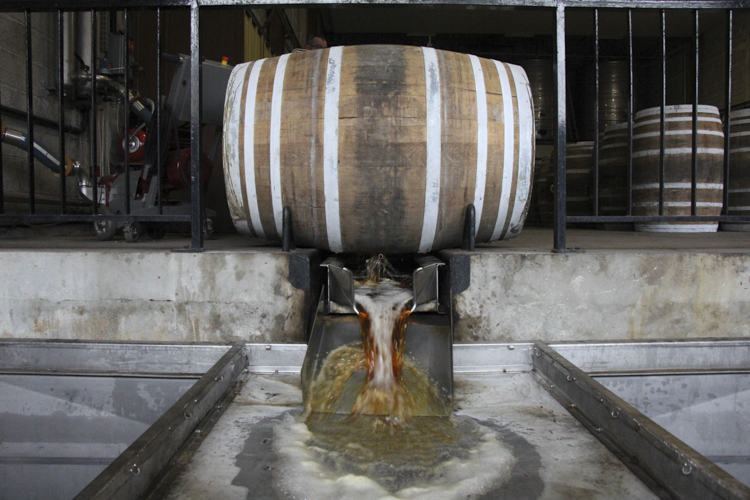
She has an exceptional collection of her grandfather’s vintages, with some as old as 1893, and is committed to demystifying armagnac.
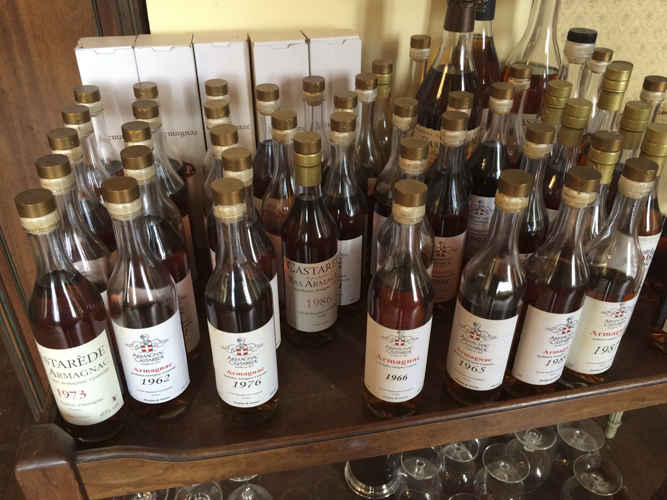
For special tastings, there is an ornate trolley packed with 50 tiny bottles, each a different vintage that she searches through like a chef selecting ingredients, saying, “people need to try small bottles of 20 year old, 30 year old and 40 year-old to really understand the differences.”
There might not be chickens and ducks running around the farmyard but Domaine de Laguille is clearly a more rural, artisan world than some of Armagnac’s elegant chateaux. Guy Vignoli and his wife, Colette, live on the property, and their rustic half-timbered barns and animal stables have been converted into barrel-ageing cellars.
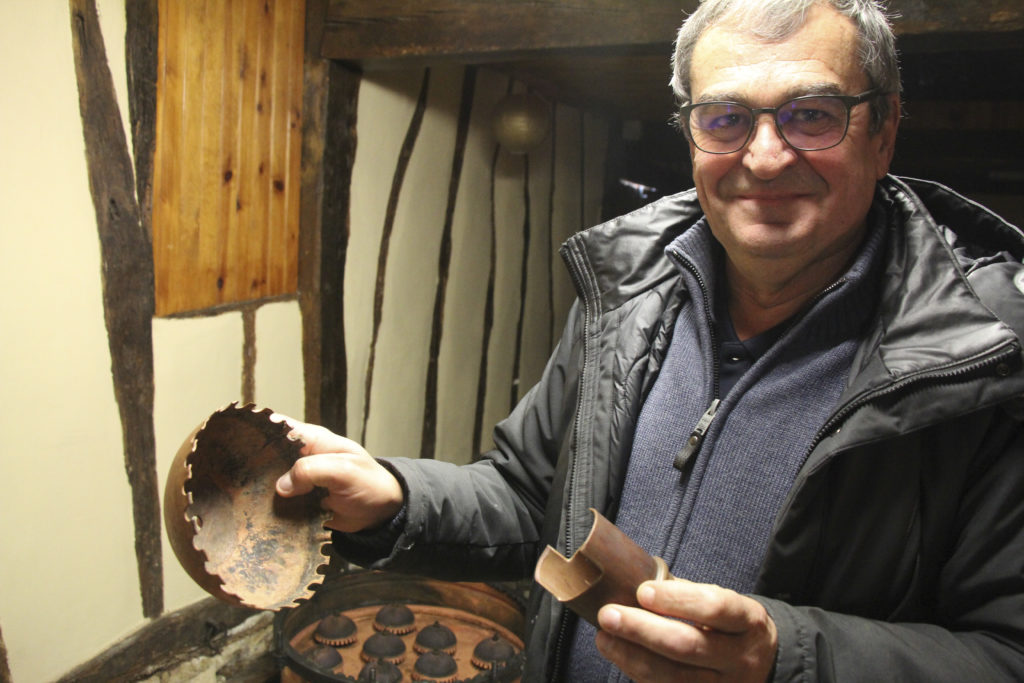
A classic Gascon farmer, Guy used to raise cattle, but today concentrates on producing not just a high quality selection of Armagnacs, but a surprising range of wines. “I am a proud Vigneron Indépendant,” clarifies Guy, “because our wine production is very important to provide a treasury to invest in the future of armagnac.”
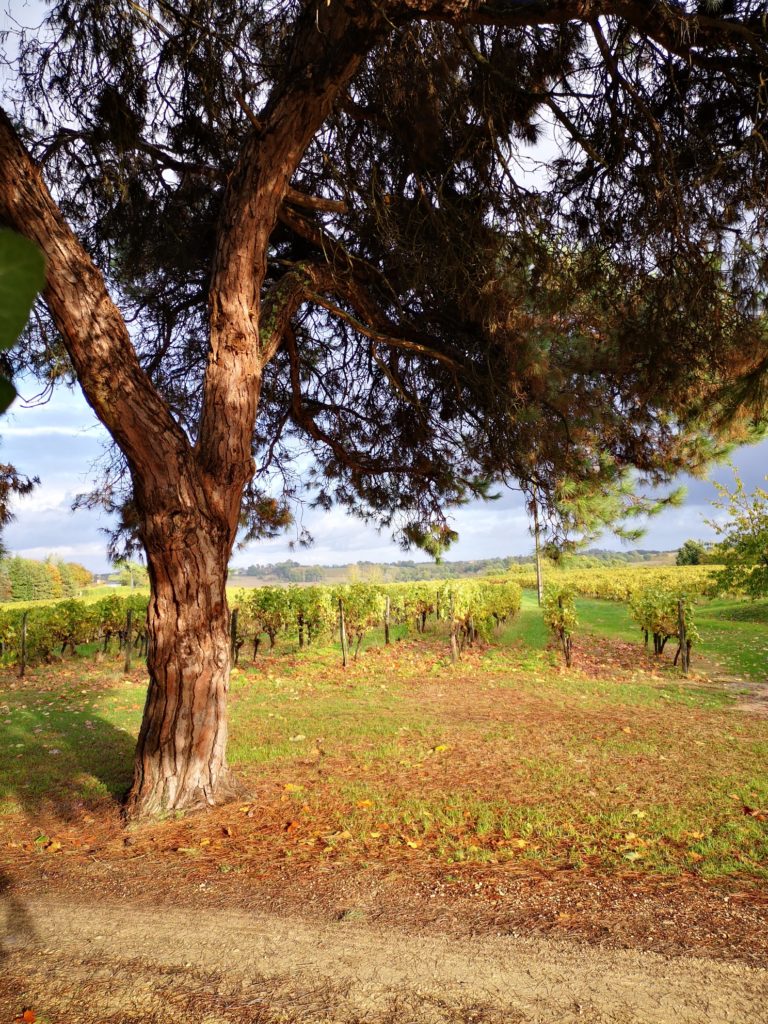
Guy enjoys experimenting with older, used casks, but only he knows what is stored in his cellar where barrels are seemingly piled higgledy-piggledy, with cobwebs everywhere, a dusty, sandy earth floor, and mouldy fungi growing on the wall, all classic consequences when small quantities of armagnac evaporate during ageing. But he says with a glint in his eye that “if someone comes in and asks for a bottle of a particular vintage, then I just disappear into the cellar, draw direct from the cask then bottle and label by hand.”
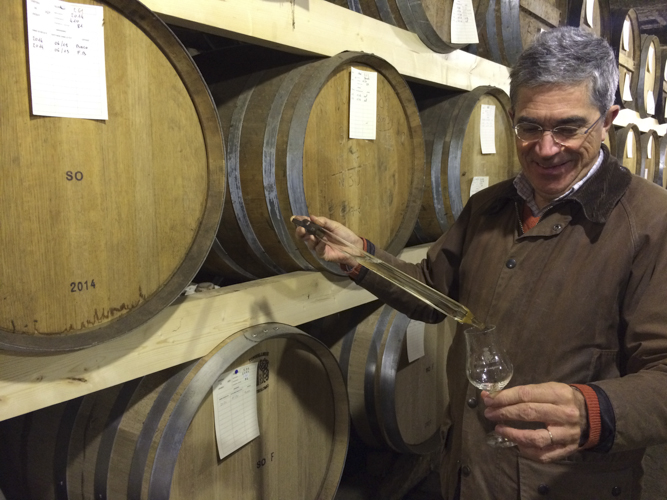
Gilles de Boisséson likes to taste his armagnac direct from the barrel, delicately drawing the precious amber liquid with a long glass ‘pipette’. Each cask is meticulously marked with the year and type of grape, so you can discern the subtle differences between Folle Blanche, Colombard and Baco. No Ugni-blanc though, as Gilles feels “it is not suited to our sandy soil here.” Everything about Château de Lacquy takes your breath away; the cellar is filled with 500 casks, crafted from Gascon oak, the estate extends over 400 hectares of cereals, vegetables and vines, while the distinguished château has been in the family since 1711, historically the oldest producer of armagnac. Gilles is the 10th generation, an affable country squire who talks passionately about armagnac. “I always love it when American visitors tell me that the French export their cognac but keep armagnac for themselves,” he recounts. “People must understand that if you have a bad wine then you have a bad basis for distillation, producing an aggressive eau-de-vie. This is why whiskey and cognac are double distilled, reaching 70° or even 90° degrees to get rid of impurities. The tradition here of using our specially designed still, an Alambic Armagnaçais, is that there is only a single, gentle continuous distillation, producing a clear eau-de-vie that is already perfect at 50-52°.”
Laubade is a distinctive, unorthodox Armagnac house, beginning with its 1870 château, a brightly-painted half-timbered mansion that looks more seaside Normandy than rural Gascon. It is surrounded by a massive 103 hectare single vineyard, solely producing the wine distilled for their armagnac.
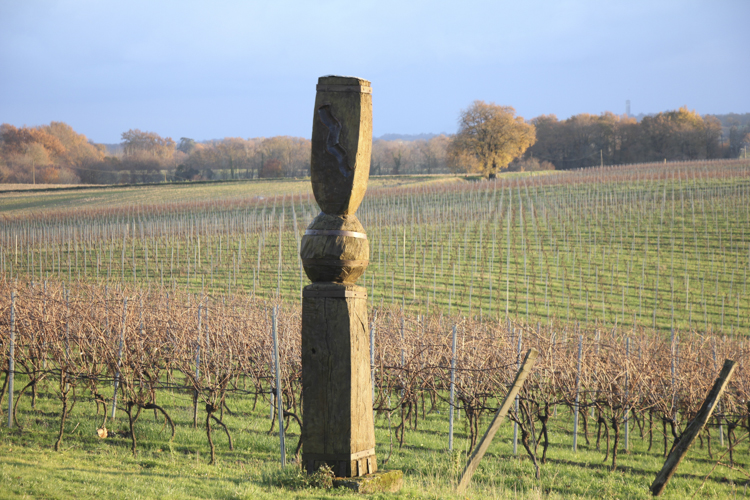
The present owners, the Lesgourgues family, bought the estate in 1974, and are serious patrons of the arts. Everywhere you look there are eye-catching artworks, sculptures and installations, displayed in the distilling room and barrel-ageing cellars, the gardens, vineyards, and sumptuous salons inside the château. Watching the freshly-distilled eau-de-vie trickle out of their immense purpose-designed gas-fired alambic, Denis Lesgourgues recounts how “my grandfather fell in love with the chateau and bought it on impulse, and when my father took over he transformed Laudabe into a single-minded producer of high quality armagnac.” The barrel collection here is astonishing, some 2,800 ‘pieces’ of 400 litre casks, enough stock for 15 years. And what really takes the breath away is Laubade’s Paradis of ancient vintages, a beautiful private cellar filled with antiques and artworks, mysterious glass bonbons filled with golden elixirs, some going back to 1888, preciously saved for exclusive assemblages and precious vintages.
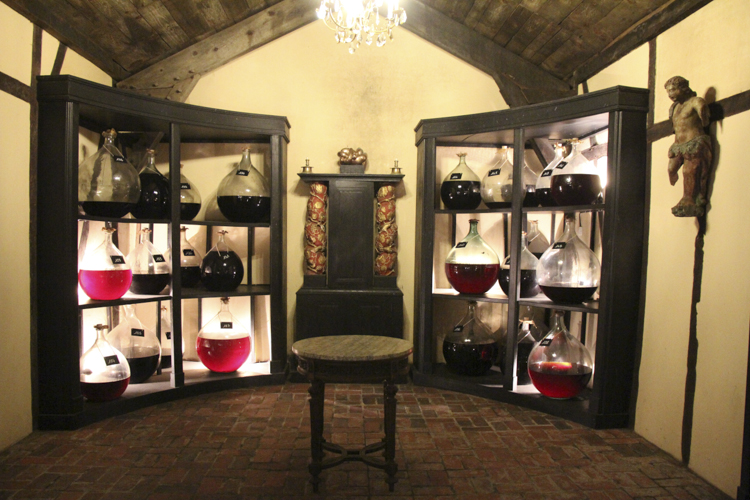
Prosper Delord founded his family business in 1892, and today, the fourth generation brothers, Jérôme and Sylvain, have created one of the most innovative armagnac houses. A sepia portrait of the moustachioed Prosper hangs in the tasting room, but nostalgia is replaced by modernity as soon as Jérôme takes guests on a tour of the cellars and towering state-of-the-art wine cisterns, decorated with massive murals of provocative street art graffiti.
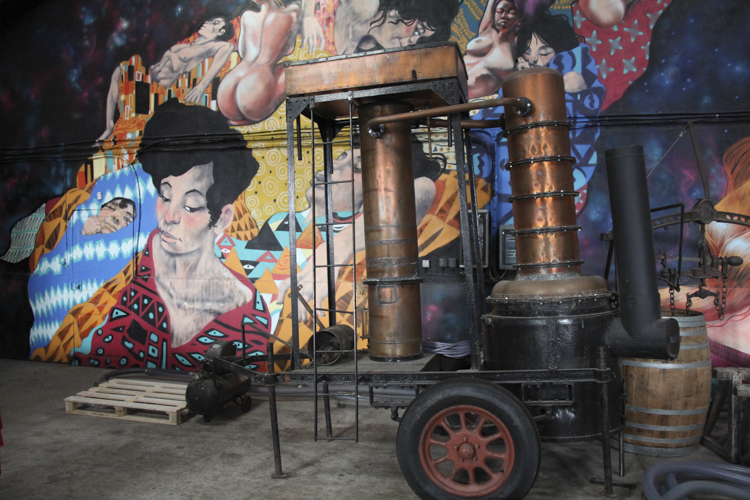
In the distilling chai stand four imposing alambics, two traditional Armagnaçaises and two Charentaises, the double distillation pot used to make cognac. It is rare for an armagnac producer to use a cognac-style alambic, but Jérôme insists that, “we try to take the best from both systems of single and double distillation. In general, the Charentaise is perfect for our range of young armagnacs – VS and VSOP – while for XO blends and vintages, it is more likely to be a single Armagnacaise distillation.”

Delord are pioneers in promoting younger spirits aged 1-4 years, “because we want armagnac to be accessible for everyone, easy to drink, reasonably priced” recounts Jerome. “These young armagnacs and our traditional ‘Blanche or White Armagnac’, a clear, fruity eau-de-vie not aged in wood, are perfect in cocktails and long drinks, a very different way for a younger generation to discover our venerable 700 year-old spirit.”
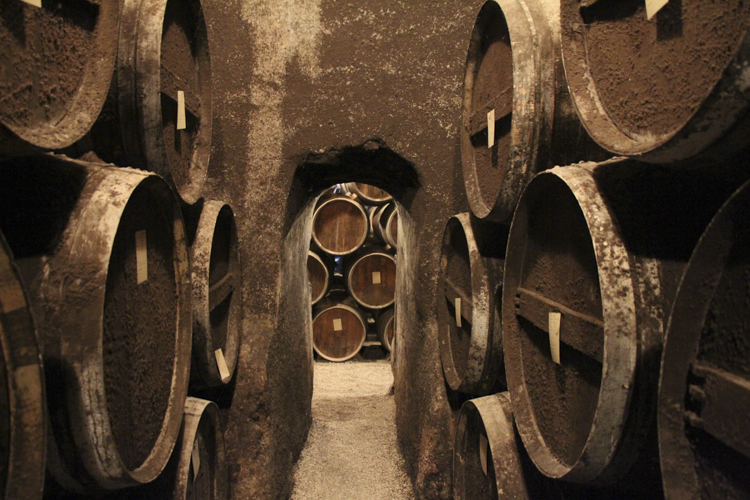
A visit to Tariquet resembles nothing else in the Armagnac region. A vast family enterprise cultivates a 1,125 hectare vineyard, the largest in France, run by two unassuming but highly driven forty-something brothers, Armin and Rémy Grassa. Their family bought Château Tariquet in 1912, an historic site where armagnac was produced since 1683. “In 1972, at just 18 years of age, my father Yves and his sister Maïté, were handed total control of the domaine, a huge responsibility and opportunity that they leaped at,” recounts Armin. “Two crucial decisions were made; to enlarge the production and quality of wine, and create a stock of armagnac. In 1982 our first bottled wine was sold and so the Côtes de Gascogne revolution began – a quality, well-priced, refreshing wine, using the grapes traditionally grown to distill as armagnac. No one thought it would take off as it did.” Today, Tariquet produce around 10 million bottles of wine a year, while if armagnac production stopped tomorrow, their 7 cellars are filled to last the next 23 years. “We stock some 5,000 barrels, because we believe in the future of armagnac,” states Armin proudly.
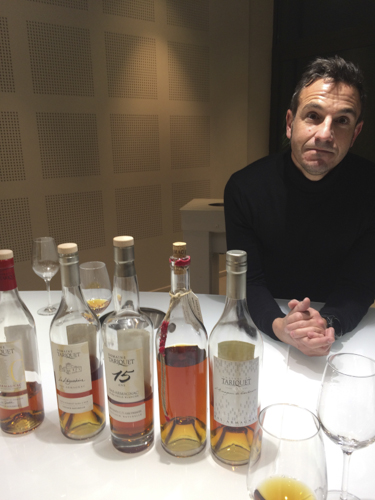
“Wine may have brought Tariquet visibility, but our historic role remains that of an armagnac producer. It is our heart. Wine is immediate while armagnac is for the future. Wine is innovative while armagnac is traditional.”
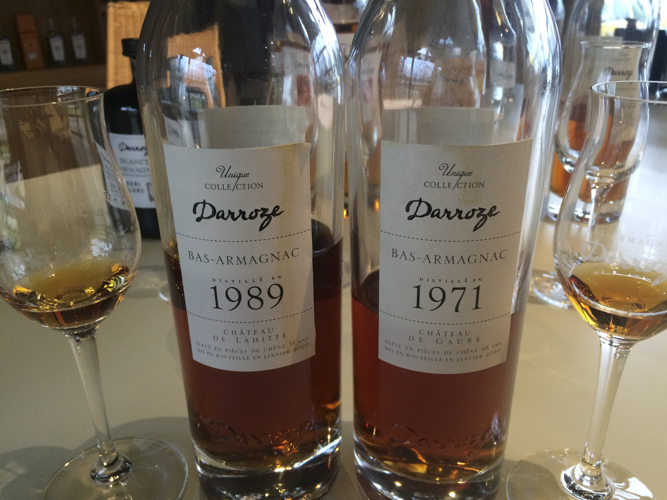
If you have ever wondered why in any fine dining restaurant there is always a selection of exceptional vintage armagnacs, then a trip to Marc Darroze will provide the answers. Darroze proudly calls itself a ‘négociant’. so Armagnac’s most famous ‘Maison’ does not own a vineyard , but diligently purchases wine to distil and age, and also unearths hidden treasures of ancient armagnac stashed away by smallholders. The founder, Jean Darroze, a well-known local restaurateur in the 1950’s, discovered many farmer vignerons had a stock of valuable armagnac casks, their way of saving for a rainy day rather than putting money in the bank.
Marc Darroze is his grandson, who reminisces how, “grand-père began by buying barrels to serve by the glass, meticulously naming the farm, the village, the grapes. Then my father, Francis, began selling our armagnac to restaurants all over the world. The chefs loved our philosophy, our respect for the terroir. We showed that each cask of armagnac is different, even if it comes from the same grape and vineyard, the same harvest, the same alambic.” Marc has transformed the Maison, which now proposes organic armagnac, a range of prestigious Grands Assemblages, a unique range of single grape Blanche Armagnac and much more.

He plans to open his own distillery soon. “But we must preserve our traditions,” he says nostalgically, “so I still ask our winemakers to distill one cask to hide away, because this was the beginning of our story.”
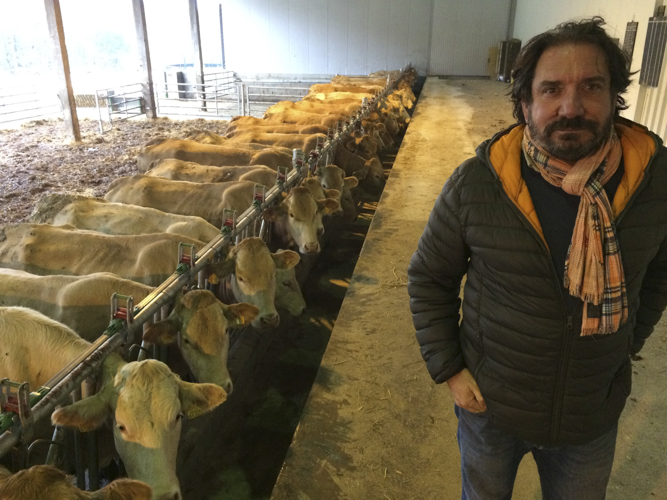
Don’t be surprised if a tasting tour of Château de Pellehaut continues on after the cellars to see their herd of 60 Blonde d’Aquitaine cows, as the environmentally- conscious brothers who run the estate, Mathieu and Martin Béraut are just as proud of the cows as their exceptional armagnacs and innovative wine range.
Mathieu proudly relates how, “there are records of our family being active in the local commune over 400 years ago, and my father, Gaston, bought this 18th century château in the 1970’s. It covered 280 hectares of fully-functioning polyculture; farming. vineyard and armagnac. That has been the Gascon tradition for centuries, explaining our incredible biodiversity. But sadly estates like ours have become the exception rather than the rule today. The formula was simple and we have never changed – plant vines on the best land, grow cereals on fertile fields to feed cattle while the rest leave as woods.” Wine is also very important here, as the family launched their first commercial bottles in 1985, and have extended the original 65 hectare vineyard to some 300 hectares. When tasting, be sure to try the ‘brut de fût’ selection much loved by modern connoisseurs, often single cask, single grape bottles with no water reduction, so be ready for a jolt of 50° alcohol rather than the softer, smoother 40° of an aged blend or older vintage.
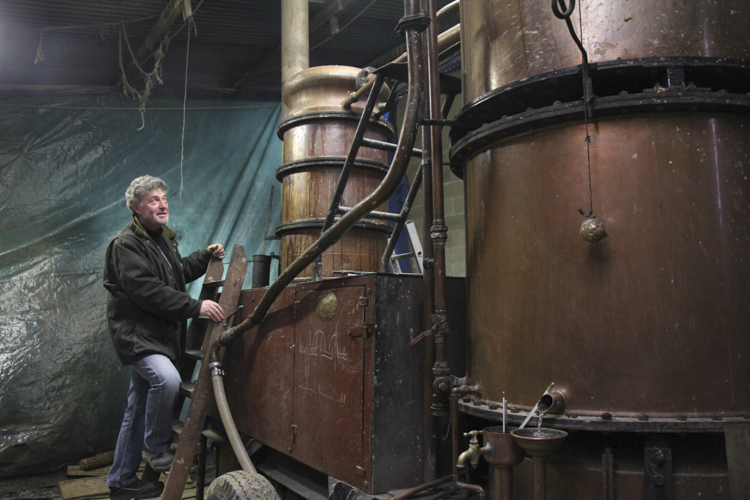
No period is more emotive in Armagnac than the months of November till March, reserved for distilling the wine from the year’s grape harvest into a crystal clear eau-de-vie that will metamorphose into golden nectar after years of barrel maturing. While some producers own their own alambics, many rely on the traditional mobile still to turn up for a few days to produce the annual armagnac. Marc Saint-Martin is one of the last ‘bouilleur de cru’, trundling round over 70 domaines with his two ancient wood-fired alambics. Visit his rustic domaine, and you will meet a man who is also an independent winemaker and armagnac producer. His Alambic Armagnaçais sits on display in the tasting room, looking like a Victorian steam engine with its tall copper boilers linked by numerous pipes, balancing on a set of wheels.
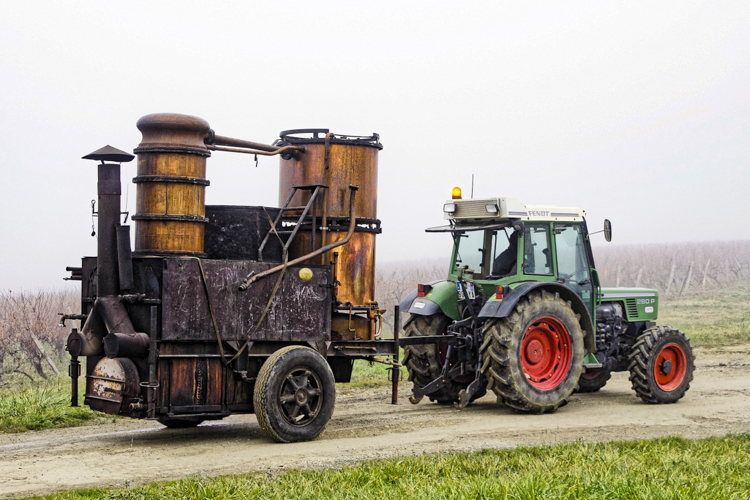
And the work as an ambulant distiller is hardly glamorous, with the alambic unceremoniously pulled by tractor from one cellar to the other, with the vigneron obliged to supply and stoke the wood while Marc supervises the non-stop distillation, 24 hours a day without sleep, until there is no more wine left, and the armagnac can head off to the cask.
where to stay
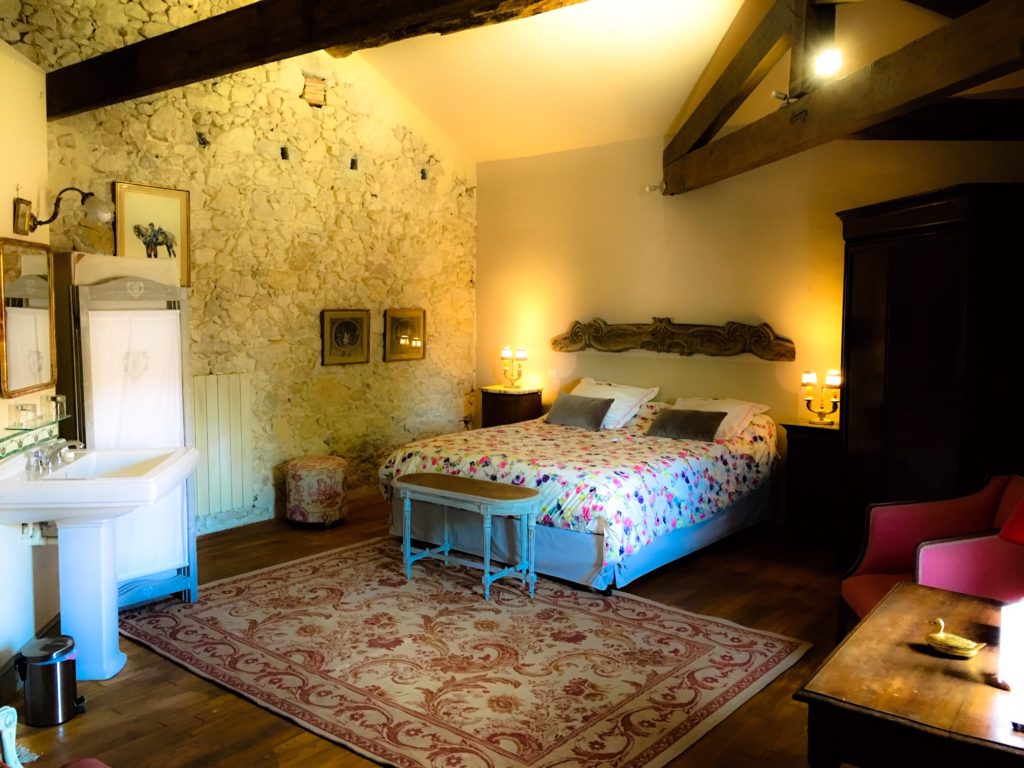
Beautifully restored farmhouse popular with both pilgrims following the route of Saint-Jacques-de-Compostelle and armagnac-lovers on a tasting holiday.
Friendly owners of grand manor house offer b&b accommodation, swimming pool and cellar tasting of their armagnac, wines and Floc de Gascogne.
where to eat
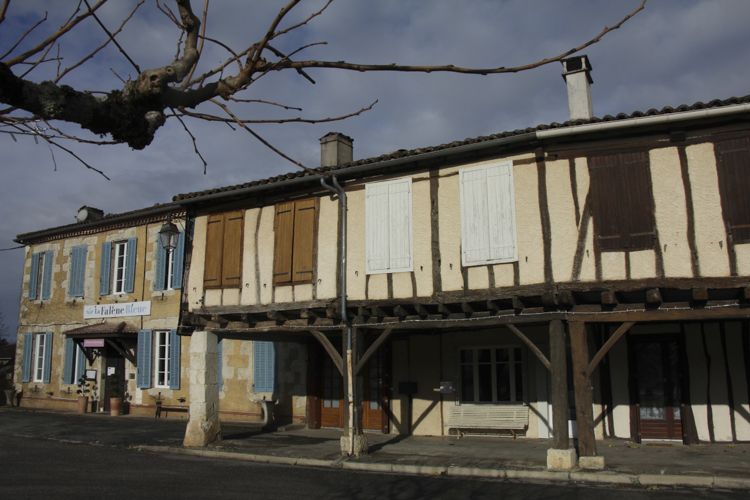
Classic village bistrot surprises with mix of traditional dishes and creative tastes like organic trout with pumpkin and lemongrass broth.
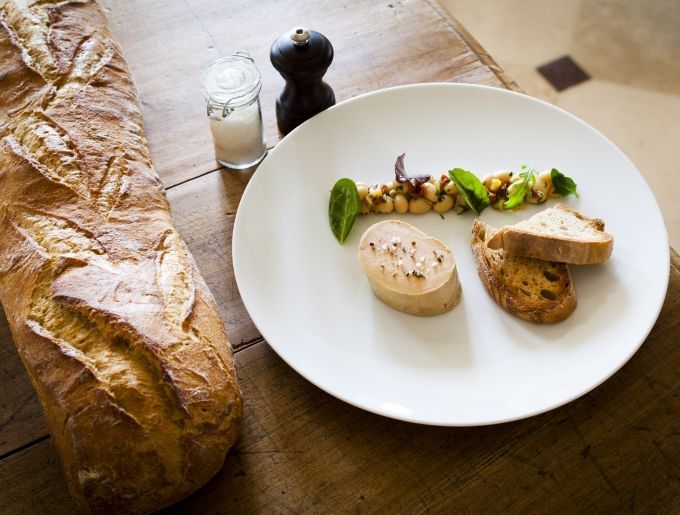
Time for a splash-out? Enjoy gourmet cuisine inspired by famous 3 Star Michelin chef, Michel Guérard, at surprisingly affordable prices.
Rub shoulders with vignerons and armagnac producers, feast off kilometre-zero local products from organic veggies and cheeses to artisan foie gras.
what to do
Outside picturesque Labastide d’Armagnac, this 12th century Knights Templar chapel museum is a pilgrimage for amateur and Tour de France cyclists
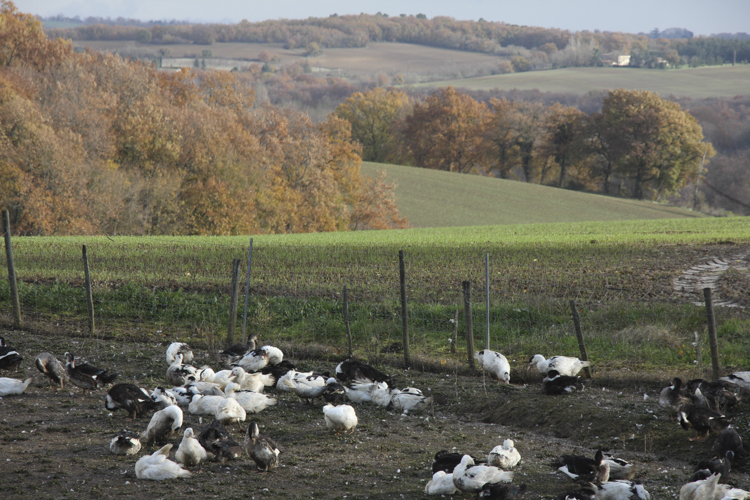
There will always be controversy about foie gras production, but visiting an artisan farm with the ducks waddling around at liberty paints a different picture. And the Fezas family also propose a whole lot of other delicious gourmet conserves.
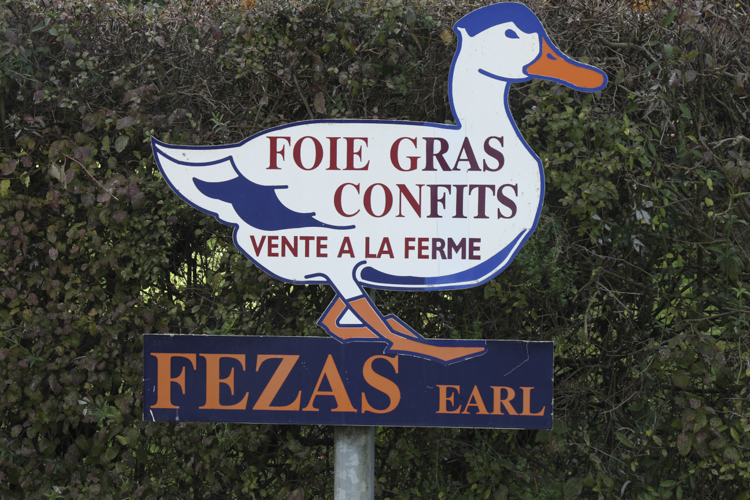
This well-preserved 12th century Cistercian abbey also displays a private art collection with Cezanne, Monet, Picasso and Renoir

